Sensible TV placement
Learn techniques for making sure that the TV is in the right place when placing a TV in a family room or living room
Twenty years ago, my parents bought a new house. I remember walking through it in anticipation of seeing my favorite room, the family room. Our new family room was cozy, with space for a large couch and a couple of lounge chairs. I was excited about the space, but I had one question: “Where does the TV go?” Today, I spend my time designing new homes, additions, and remodels, and I am still asking myself the same question. To find the answer, I first figure out the television’s role in the home.
Determine the focal point
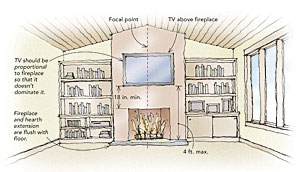 Vertical Arrangements Fit Skinny Rooms
Vertical Arrangements Fit Skinny Rooms
It used to be tough to fit a TV in a relatively narrow room. However, mounting a flat-screen TV over the fireplace can be a successful way to organize the room because it allows seating on each side of the fireplace and TV. This furniture arrangement fosters family interaction when the TV is off. With their vertical alignment, the TV and the fireplace share the same focal point, so furniture can be positioned toward one specific area.
Although the TV is not at its ideal viewing height, seating near the rear of the room helps to mitigate its higher position.
Use caution if or when placing the TV over the fireplace. It should be positioned as low as possible for viewing comfort, but not too close to the fireplace. (The TV owner’s manual may have recommended clearances.) At a minimum, keep the TV at least 18 in. above the top of the fireplace opening. If remodeling, you can place a thermometer at the proposed TV location while a fire is burning and check the reading against the operating temperature range listed in the TV manual.
In most traditional homes, a fireplace is centered in the family room, and it serves as the primary focal point. This placement, however, doesn’t always make sense. If the fireplace is used only a few times a year, it shouldn’t be the center of attention.
Similarly, the amount of time that the TV is used should determine how central it is to the room’s furnishings. The role of the television in family life has changed a lot in the past 20 years. If the TV is used daily, it should be the primary focus within a space. If it’s used infrequently, the television can be a secondary focal point. Of course, choosing the focal point doesn’t have to be so definitive. If the fireplace and television both receive regular use, they can both be primary focal points.
Consider room size and furniture layout
If I’m designing for a remodel, the room size and the furniture layout may already be determined. If I’m designing an addition or a new home, though, I have a little more control over a room’s dimensions and proportions. The room size and integration of sofas and chairs within it determine whether a U-shaped or L-shaped seating arrangement works best. By extension, this layout influences the amount of wall space available for the TV and bookcases.
When it comes to TV size, many people think bigger is better. However, room proportion and viewing distance from the TV should dictate television size. You don’t want to watch a 15-in. TV if you will be 16 ft. away or watch a 70-in. flat screen if you will be 6 ft. away. Many people are surprised to find out that they would be better served with a smaller television screen than they were considering. If they are adamant about having the largest TV screen on the market, I adjust the proportions of the family room and/or sitting area accordingly or suggest a dedicated media room.
Emphasize the TV with strategic layouts
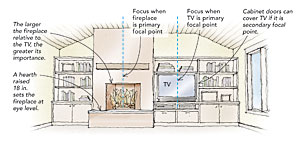 Horizontal Arrangements Offer Flexibility
Horizontal Arrangements Offer Flexibility
When the TV and the fireplace are arranged horizontally, the primary focal point dictates furniture placement. If the TV gets more use than the fireplace, center the furniture on the television. Conversely, shift the orientation of the furniture toward the fireplace if it is the primary focus. The larger the space between the TV and the fireplace, the less important the secondary focal point becomes. If they get equal use, center the furniture between the TV and the fireplace.
The most common television and fireplace layout is the horizontal layout, or what I call the “next-to” configuration. In a horizontal layout, the TV and fireplace are side by side, allowing for three possible primary focal points: the fireplace; the TV; or a combination of the two. The biggest benefit to this layout is the vertical freedom it allows the two pieces. Both the TV and the fireplace can be set at comfortable viewing heights for people who are seated. However, in smaller rooms, the width of this layout can make it difficult to arrange seating properly. Often, the next-to configuration is more conducive to an L-shaped seating configuration (floor plan above right).
With flat-screen TVs, a vertical, or “on-top-of,” configuration is possible if the fireplace is flush with the floor. Given their stacked configuration, both the fireplace and the TV share the primary focal point of the family room. If I am dealing with a skinny family room, I can use this layout to include a TV and fireplace and still have room for seating on both sides. The biggest downside to an on-top-of arrangement is that neither the TV nor the fireplace is at an ideal viewing height.
Comfort by the Numbers
Ideally, the TV is at eye level when you are seated. Divide the screen into thirds vertically, and set the lower third at 38 in. above the floor. That’s about eye level when you’re lounging on the sofa. In the on-top-of layout, the TV must be higher. As a rule of thumb, keep the TV at eye level if viewing distance is less than 10 ft. Beyond that distance, you can raise the bottom of the screen to accommodate a fireplace.
The relationship between TV size and viewing distance can vary somewhat. However, viewing distance for flat-panel TVs should fall between 2 to 3.5 times the diagonal screen size. For example, a 30-in. TV should be between 60 in. (30×2) and 105 in. (30×3.5) from a chair. As a starting point, I use the chart below, remembering to keep in mind the scale of the TV and the fireplace.
| TV size (diagonal) | Viewing distance Flat screen (16:9) |
| Up to 19 in. | Up to 7 ft. |
| 20 in. to 29 in. | 6 ft. to 8 ft. |
| 30 in. to 39 in. | 8 ft. to 10 ft. |
| 40 in. to 49 in. | 10 ft. to 12 ft. |
| 50 in. to 59 in. | 12 ft. to 14 ft. |
| 60 in. and above | 14 ft. and up |
Illustrations: Dan Wallace
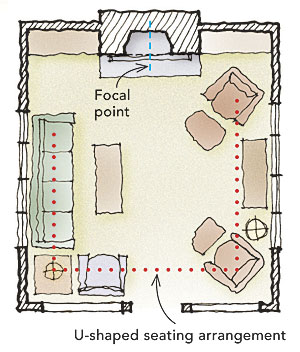
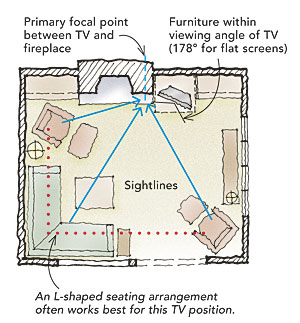
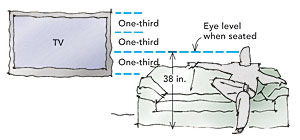
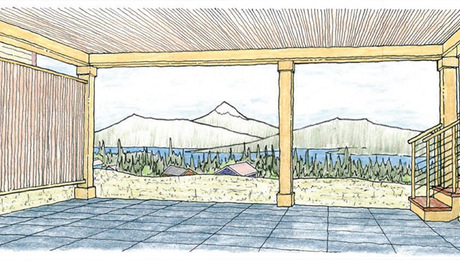
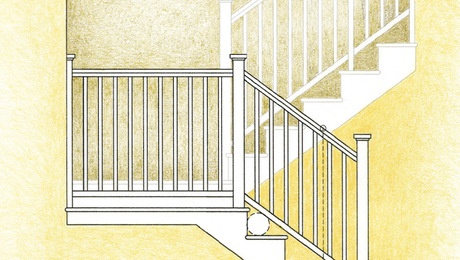
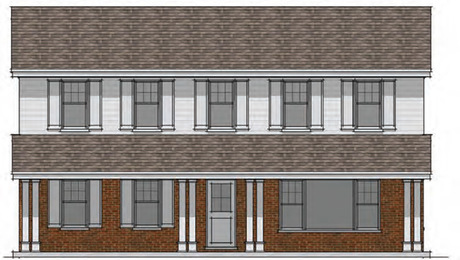
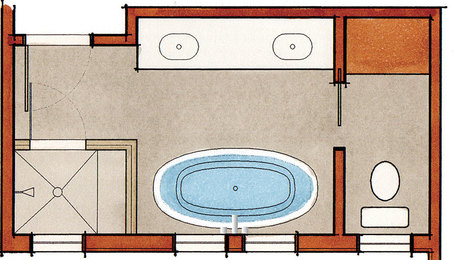
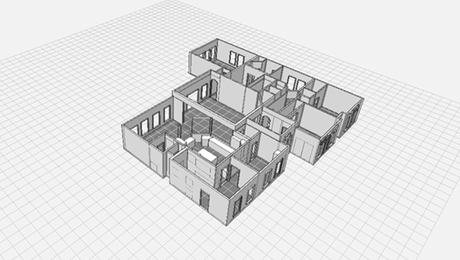
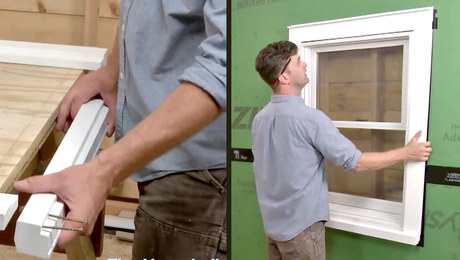

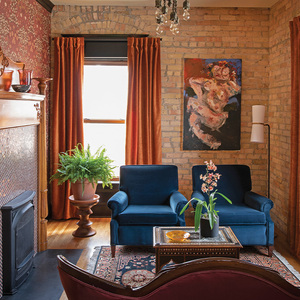
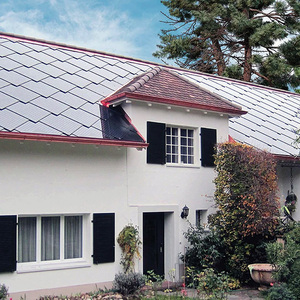
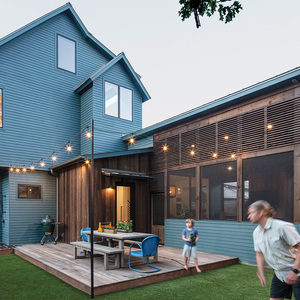



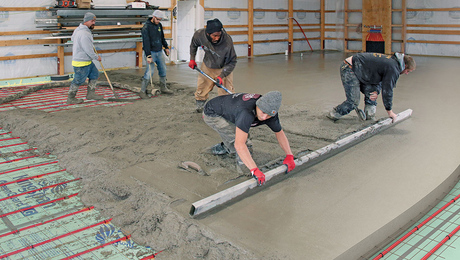
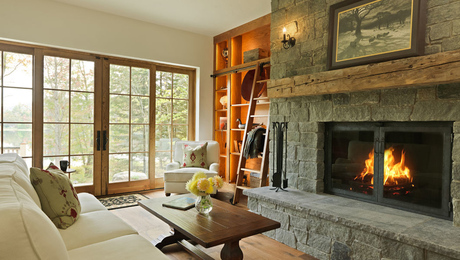


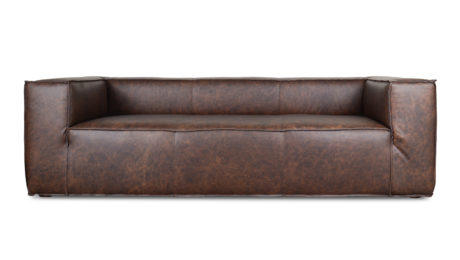
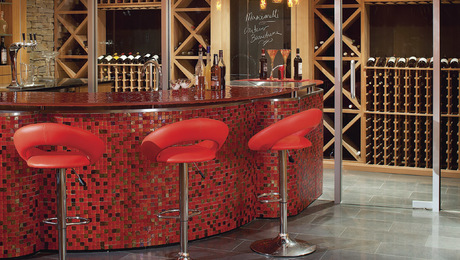
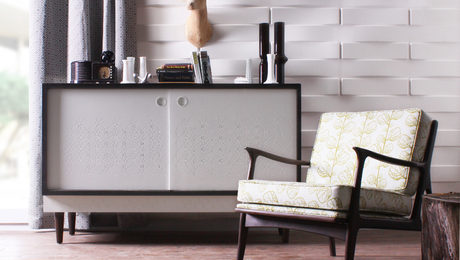
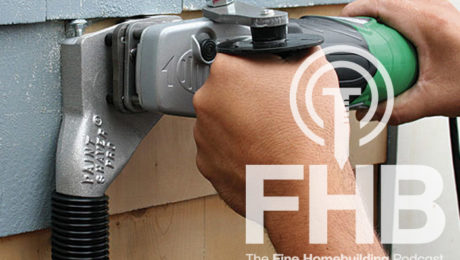
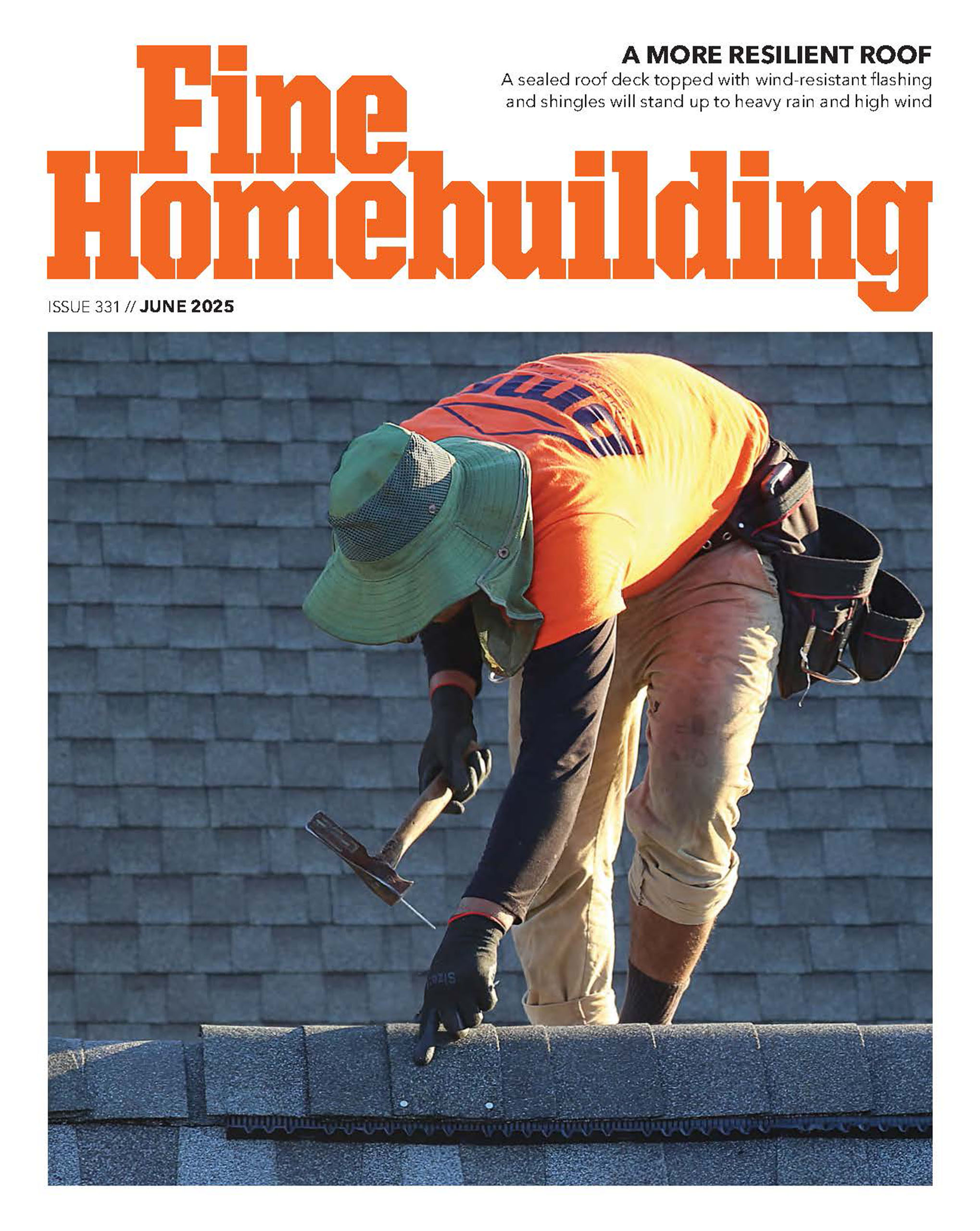









View Comments
article cut , too much bs on print out, are you selling a reprint or the advertisement